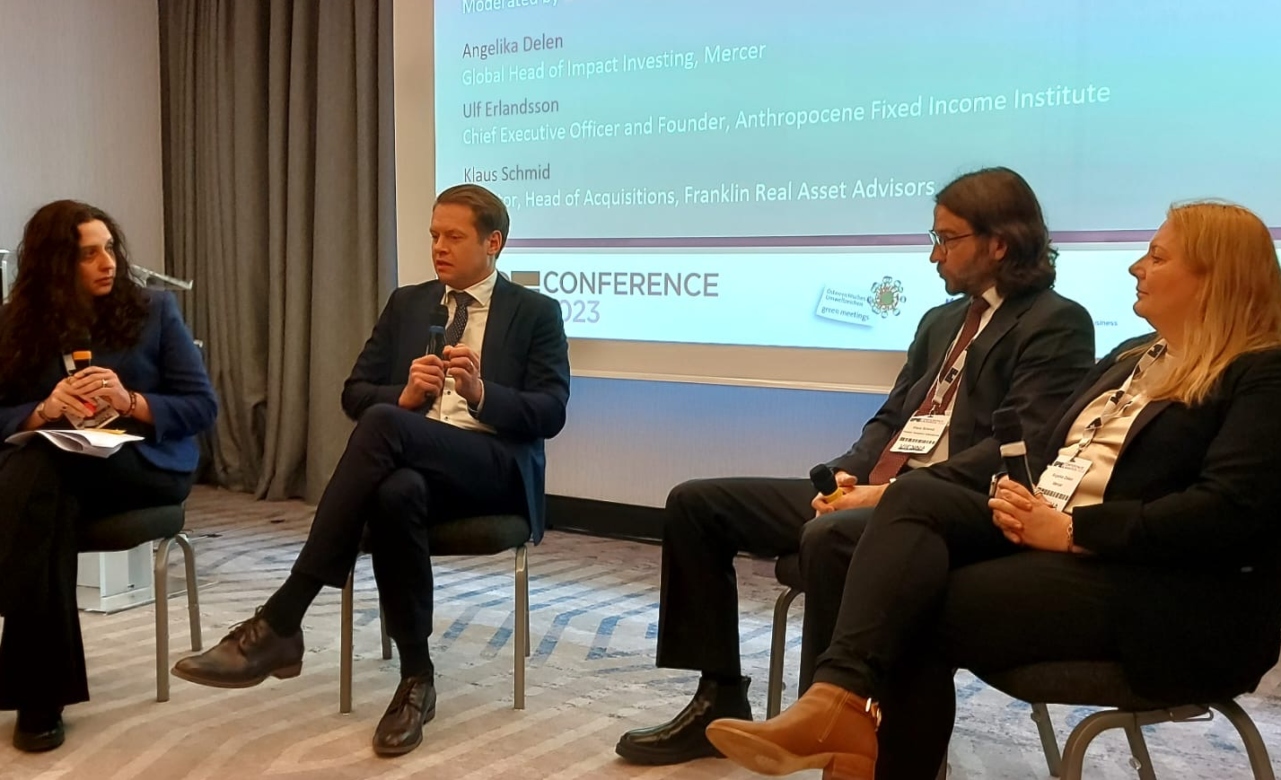Asset owners should always ask their counterparties what the most troublesome asset is in their portfolio or on their balance sheet, according to the CEO of the Anthropocene Fixed Income Institute (AFII).

Speaking during an impact investing forum at the IPE annual conference in Vienna this week, Ulf Erlandsson said transparency should be required across all asset classes.
When Erlandsson used to work at the Fourth Swedish National Pension Fund (AP4), he said he would ask borrowers what the worst asset was that they had on their balance sheets, the so-called skeleton in the closet.
“The question is not being asked enough,” he told delegates. “Ask it upfront of issuers and portfolio managers. It defines how people think about their impact.”
Impact opportunity?
The question could also lead to a discussion about how to potentially improve this asset, so in this sense it could lead to an impact opportunity.
Asset owners are the “apex predators” of the investment chain and should appreciate that “people listen to you”, he said.
In addition to kicking the tyres on transactions that borrowers and asset managers are doing, asset owners could target the banks that are doing deals for issuers in the fixed income market, Erlandsson said.
This was one of the most “important engagement routes”, he said.
AFII works with asset owners to develop league tables for bank counterparties’ green and fossil fuel financing, which allows the lowest ranked to be singled out for engagement.
“It has tremendous effect,” he said.
Responding to a comment from a delegate that the panellists were passing the buck to asset owners when the problem was rooted in “the system”, Erlandsson said it was important not to be “overwhelmed by the horrors of the world” and that a small campaign can snowball.
He was joined on the panel by Klaus Schmid, director and head of acquisitions at Franklin Real Asset Advisors, who spoke about achieving impact in the real estate space, and Angelika Delen, global head of impact investing at Mercer, who emphasised the importance of understanding outcomes from any given investment in order to achieve impact.
PGGM’s three dimensional approach
In another session, Piet Klop, head of responsible investment at the €230bn Dutch investor PGGM, talked about the institution’s ‘three-dimensional’ philosophy, taking account of risk, return and positive impact. PGGM is a major Dutch investor, running the assets for the €230bn PFZW healthcare pension scheme in the Netherlands.
Klop said impact investing for the Dutch not-for-profit cooperative pension fund service provider was more “an art than a science” and that asset owners can get involved “step by step”.
His tips were to “start with the why?”, be practical, and accept using proxies if the ideal data point is unavailable. He also recommended being selective, because being holistic was “the kiss of death, great in theory but hard in practice”.
PGGM endorses the definition of impact investing developed by the Global Impact Investing Network (GIIN), which requires measurable real world improvement.
PGGM does not require it to be decisive in generating that impact, i.e. “investor additionality”, but companies must show improvement against a predefined target to remain in PGGM’s portfolio.
Roadmap for pension funds
In other sessions, Christin ter Braak-Forstinger, the chief executive of Zurich-based Chi Impact Capital, and Charlotte O’Leary, chief executive of the UK’s Pensions for Purpose, highlighted the important role that pension funds and asset owners can play in shifting investment capital to a regenerative economy, and called for greater engagement and action from investors, as the stewards of capital.






